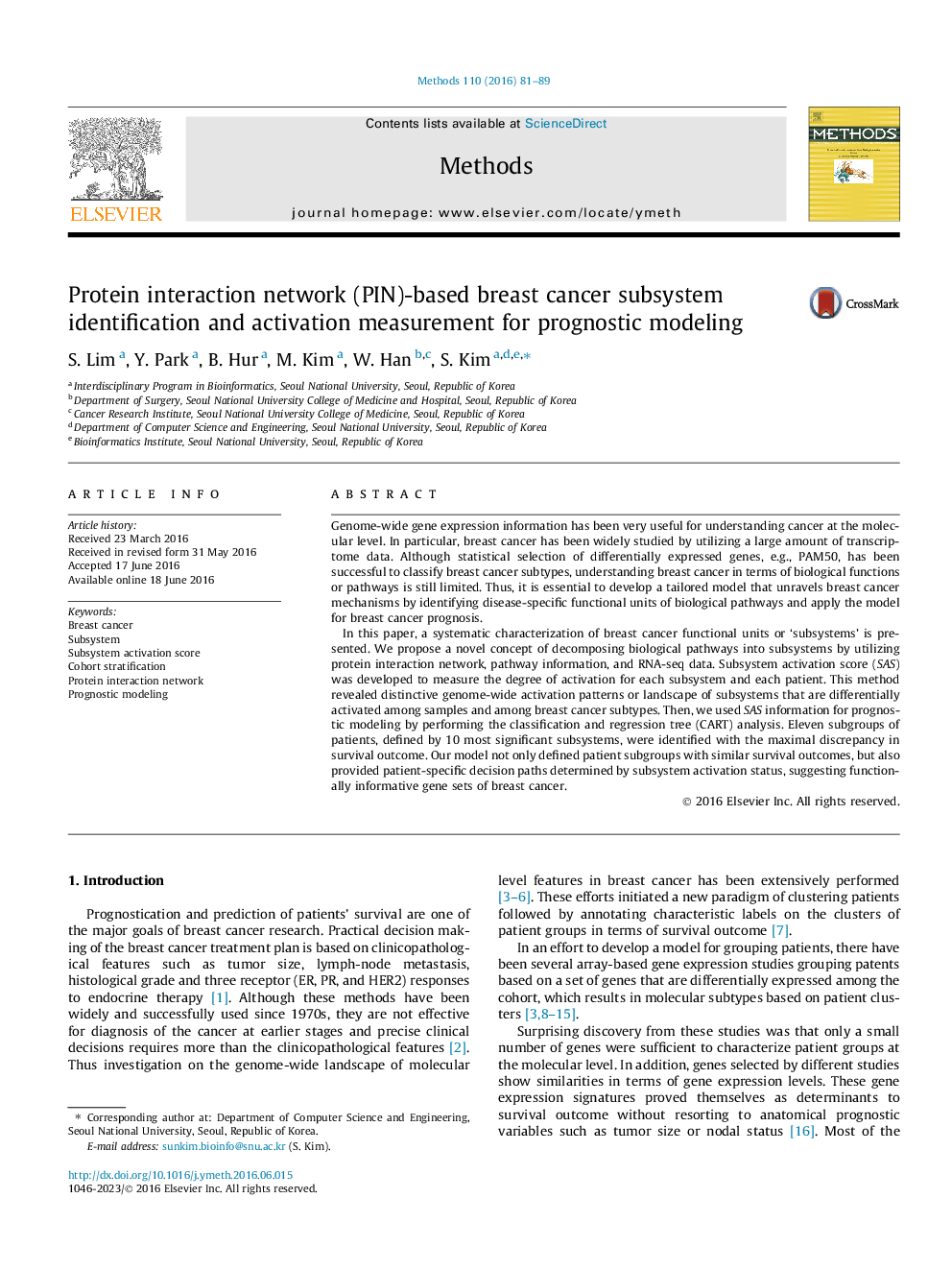| کد مقاله | کد نشریه | سال انتشار | مقاله انگلیسی | نسخه تمام متن |
|---|---|---|---|---|
| 5513584 | 1541216 | 2016 | 9 صفحه PDF | دانلود رایگان |

Genome-wide gene expression information has been very useful for understanding cancer at the molecular level. In particular, breast cancer has been widely studied by utilizing a large amount of transcriptome data. Although statistical selection of differentially expressed genes, e.g., PAM50, has been successful to classify breast cancer subtypes, understanding breast cancer in terms of biological functions or pathways is still limited. Thus, it is essential to develop a tailored model that unravels breast cancer mechanisms by identifying disease-specific functional units of biological pathways and apply the model for breast cancer prognosis.In this paper, a systematic characterization of breast cancer functional units or 'subsystems' is presented. We propose a novel concept of decomposing biological pathways into subsystems by utilizing protein interaction network, pathway information, and RNA-seq data. Subsystem activation score (SAS) was developed to measure the degree of activation for each subsystem and each patient. This method revealed distinctive genome-wide activation patterns or landscape of subsystems that are differentially activated among samples and among breast cancer subtypes. Then, we used SAS information for prognostic modeling by performing the classification and regression tree (CART) analysis. Eleven subgroups of patients, defined by 10 most significant subsystems, were identified with the maximal discrepancy in survival outcome. Our model not only defined patient subgroups with similar survival outcomes, but also provided patient-specific decision paths determined by subsystem activation status, suggesting functionally informative gene sets of breast cancer.
Journal: Methods - Volume 110, 1 November 2016, Pages 81-89